In classical Japanese, India is known as “tenjiku”, which translates as “the land of heaven”. This is only an indication of how Japanese culture appreciates the Indian civilization. This term, again, is derived from the Chinese word “Tianzhu”.
Indian ideas, philosophies, and cultures had spread to China through Shakyamuni Tathagata Buddha who went to China and spread the teachings. From there, the ideas developed and reached towards far east. China had become a base for the spread, you might say.
Japanese culture has great root in the Chinese culture. Even if you look at their linguistics, much of Japanese letters have been influenced by Chinese, viz. their writing system Kanji. Indian culture, has too, influenced the Japanese culture, and it is estimated that it spread to Japan around 6th century AD. The reason is how Buddhism descended from Hinduism. “India conquered China without armies,” a quote from one Chinese admiral.
[wp_ad_camp_1]
Japanese culture has gods and demons too, which is quite similar to the Hindu mythology. There are many Hindu gods that have paved their way into the Japanese mythologies.
For instance, you can see this Japanese version of Saraswati, Benzaiten:
Yama, Enma:
Apsara, Tennin:
King of Gods – Indra, Taishakuten:
Ganesha (Ganapati), Kangiten:
Kubera, Bishamonten:
Garuda, Karura:
Many such references can be seen, especially if you go into the Kansai region. About 20 gods are worshiped all around Japan. Many of them can be seen in the Kyoto region, which is known as the city of a thousand shrines.
There are hundreds of shrines to Goddess Saraswati alone in that country, along with innumerable representations of Lakshmi, Indra, Brahma, Ganesha, Garuda and others. Even deities forgotten in India are worshipped in Japan.
There is also one interesting story about Sujatha, where a starving Buddha was saved by a girl. The girl had fed him milk gruel, and now her name is so famous that it is even turned into a dairy product ‘Sujatha’ which is sold by Meiraku.
A number of words in the Japanese language have their roots in Sanskrit. For instance, the 6th-century Siddham script is preserved in Japan, though it has disappeared from India. “Beejaksharas” (or etymology of alphabets) of Sanskrit in this script are regarded as holy and given great importance. Each deity has a “Beejakshara” and these are venerated by the people, even though most of them cannot read it. Some Japanese tombs are adorned with the Sanskrit alphabet.
Also, the idea of karma has also entered Japanese philosophies. They say “bachi ga ataru”, which translates as “something bad will happen to you if your actions cause harm”.

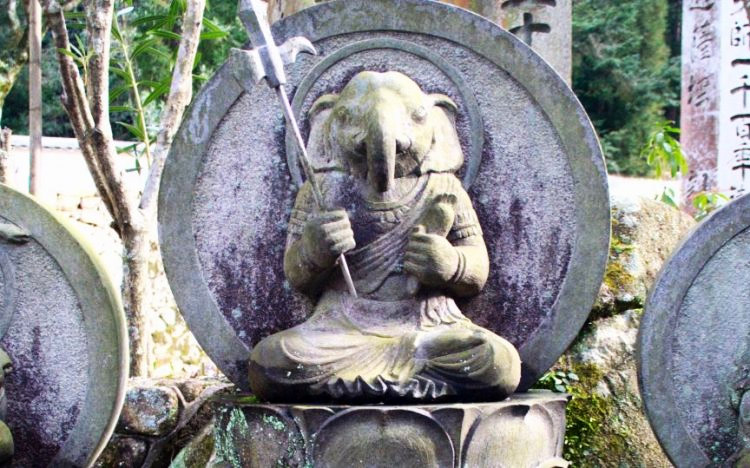
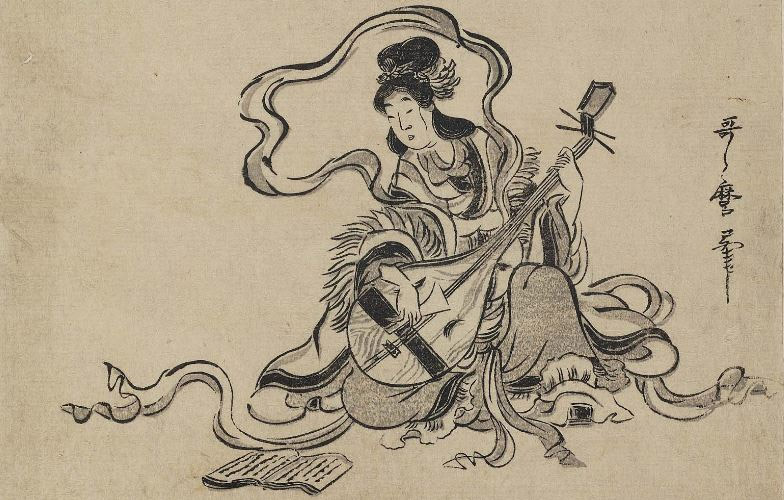
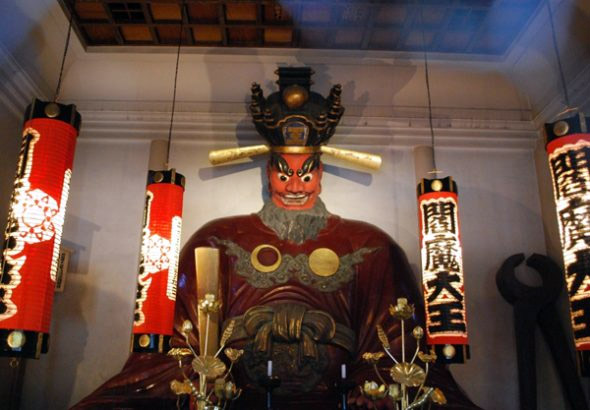
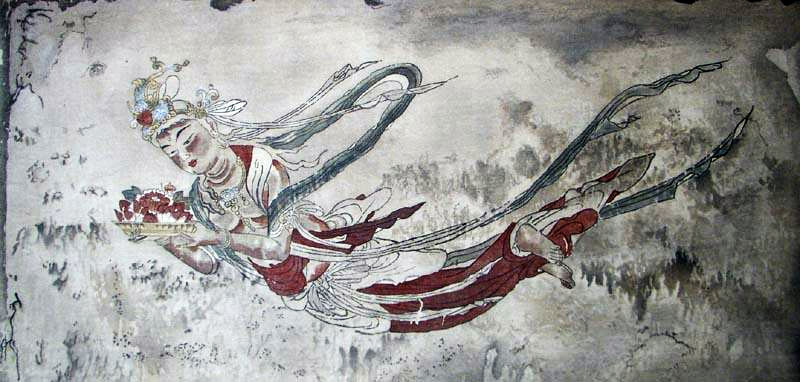
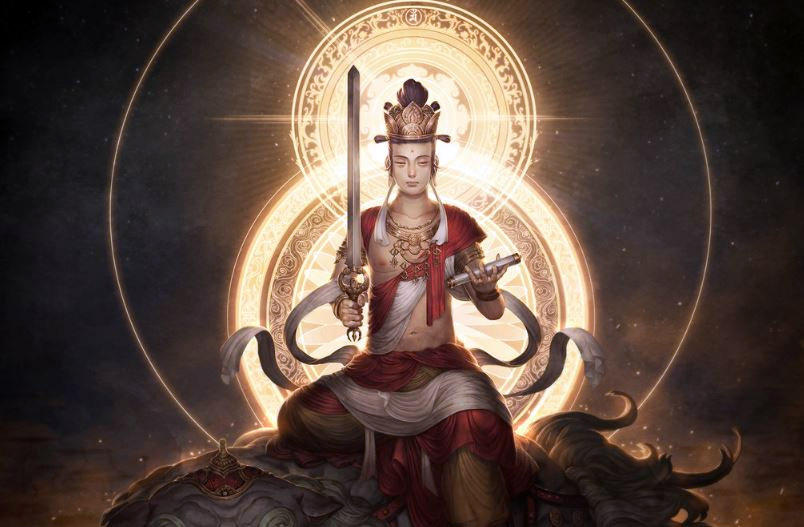
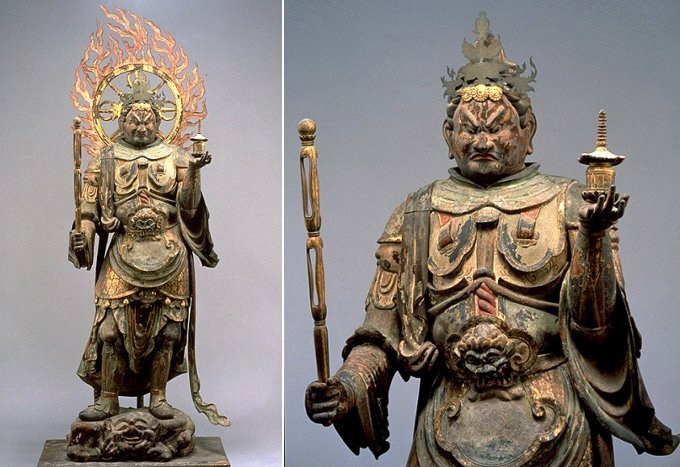
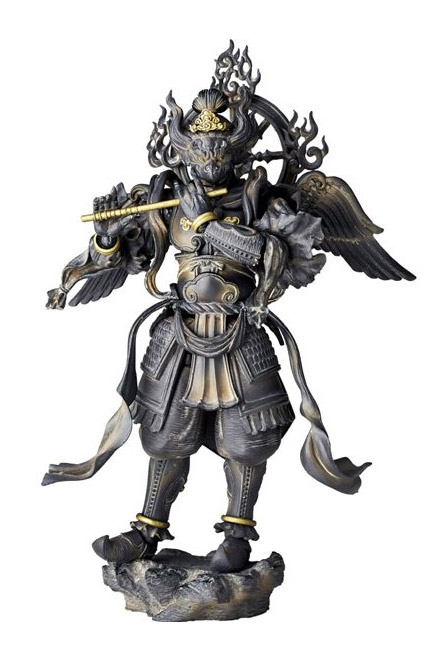










Misturu Kakimoto of the Japanese Vegetarian Society writes: “A survey that I conducted of eighty Westerners, including Americans, Englishmen and Canadians, revealed that approximately half of them believed that vegetarianism originated in India. Some respondents assumed that vegetarianism had its origin in China or Japan. It seems to me that the reason Westerners associate vegetarianism with China or Japan is Buddhism. It is no wonder, and in fact we could say that Japan used to be a country where vegetarianism prevailed.”
Gishi-wajin-denn, a history book on Japan written in China around the third century BC, says, “There are no cattle, no horses, no tigers, no leopards, no goats and no magpies in that land. The climate is mild and people over there eat fresh vegetables both in summer and in winter.” It also says that “people catch fish and shellfish in the water.” Apparently, the Japanese ate fresh vegetables as well as rice and other cereals as staple foods. They also took some fish and shellfish, but hardly any meat.
Shinto, the prevailing religion at the time, is essentially pantheistic, based upon the worship of the forces of nature. According to writer Steven Rosen, in the early days of Shinto, no animal food was offered in sacrifice because of the injunction against shedding blood in the sacred area of the shrine.
Several hundred years later, Buddhism came to Japan and the prohibition of hunting and fishing permeated the Japanese people. In 7th century Japan, the Empress Jito encouraged “hojo,” or the releasing of captive animals, and established wildlife preserves, where animals could not be hunted.
There are many similarities between the Hindu literature and the Buddhist religions of the Far East. For example, the word Cha’an of the Cha’an school of Chinese Buddhism is Chinese for the Sanskrit word “dhyana”, which means meditation, as does the word “Zen” in Japanese. In 676 AD, then Japanese emperor Tenmu proclaimed an ordinance prohibiting the eating of fish and shellfish as well as animal flesh and fowl.
During the twelve hundred years from the Nara period to the Meiji restoration in the second half of the 19th century, Japanese people enjoyed vegetarian style meals. They usually ate rice as staple food and beans and vegetables. It was only on special occasions or celebrations that fish was served. Under these circumstances the Japanese people developed a vegetarian cuisine, Shojin Ryori (ryori means cooking or cuisine), which was native to Japan.
The word “shojin” is a Japanese translation of “vyria” in Sanskrit, meaning “to have the goodness and keep away evils.” Buddhist priests of the Tendai-shu and Shingon-shu sects, whose founders studied in China in the ninth century before they founded their respective sects, have handed down vegetarian cooking practices from Chinese temples strictly in accordance with the teachings of the Buddha.
In the 13th century, Dogen, the founder of the Soto sect of Zen, formally established Shojin Ryori or Japanese vegetarian cuisine. Dogen studied and learned the Zen teachings abroad in China, during the Sung Dynasty. He fixed rules aiming to establish the pure vegetarian life as a means of training the mind.
One of the other influences Zen exerted on the Japanese people manifested itself in Sado, the Japanese tea ceremony. It is believed that Esai, founder of the Rinazi-shu sect, introduced tea to Japan and it is the custom for Zen followers to drink tea. The customs preserved in the teaching of Zen lead to a systematic rule called Sado… a Cha-shitsu or tea ceremony room is so constructed as to resemble the Shojin, where the chief priest is at a Buddhist temple.
Food served at a tea ceremony is called Kaiseki in Japanese, which literally means a stone in the breast. Monks practicing asceticism used to press heated stones to their bosom to suppress hunger. Then the word Kaiseki itself came to mean a light meal served at Shojin, and Kaiseki meals had great influence on the Japanese.
The “Temple of the Butchered Cow” can be found in Shimoda, Japan. It was erected shortly after Japan opened its doors to the West in the 1850s. It was erected in honor of the first cow slaughtered in Japan, marking the first violation of the Buddhist tenet against the eating of meat.
An example of a Buddhist vegetarian in the modern age: Kenji Miyazawa, a Japanese writer and poet of the early 20th century, who wrote a novel entitled Vegetarian-Taisai, in which he depicted a fictitious vegetarian congress…His works played an important role in the advocacy of modern vegetarianism. Today, no animal products are ever eaten in a Zen Buddhist monastery, and such Buddhist denominations as the Cao Dai sect (which originated in South Vietnam), now boasts some two million followers, all of whom are vegetarian.
The Buddhist teachings are not the only source contributing to the growth of vegetarianism in Japan. in the late 19th century, Dr. Gensai Ishizuka published an academic book in which he advocated vegetarian cooking with an emphasis on brown rice and vegetables. His method is called Seisyoku (Macrobiotics) and is based upon ancient Chinese philosophy such as the principles of Yin and Yang and Taoism. Now some people support his method of preventative medicine. Japanese macrobiotics suggest taking brown rice as half of the whole intake, with vegetables, beans, seaweeds, and a small amount of fish (optional, but not required).
In his 1923 book, The Natural Diet of Man, Adventist physician Dr. John Harvey Kellogg writes: “According to Mori, the Japanese peasant of the interior is almost an exclusive vegetarian. He eats fish once or twice a month and meat once or twice a year.” Dr. Kellogg writes that in 1899, the Emperor of Japan appointed a commission to determine whether it was necessary to add meat to the nation’s diet to improve the people’s strength and stature. The commission concluded that as far as meat was concerned, “the Japanese had always managed to do without it, and that their powers of endurance and their athletic prowess exceeded that of any of the Caucasian races. Japan’s diet stands on a foundation of rice.”
According to Dr. Kellogg: “the rice diet of the Japanese is supplemented by the free use of peanuts, soy beans and greens, which… constitute a wholly sufficient bill of fare. Throughout the Island Empire, rice is largely used, together with buckwheat, barley, wheat and millet. Turnips and radishes, yams and sweet potatoes are frequently used, also cucumbers, pumpkins and squashes. The soy bean is held in high esteem and used largely in the form of miso, a puree prepared from the bean and fermented; also tofu, a sort of cheese; and cho-yu, which is prepared by mixing the pulverized beans with wheat flour, salt, and water and fermenting from one and a half to five years.
“The Chinese peasant lives on essentially the same diet, as do also the Siamese, the Koreans, and most other Oriental peoples. Three-fourths of the world’s population eats so little meat that it cannot be regarded as anything more than an incidental factor in their bill of fare. The countless millions of China,” writes Dr. Kellogg, “are for the most part flesh-abstainers. In fact at least two-thirds of the inhabitants of the world make so little use of flesh that it can hardly be considered an essential part of their dietary…”
Rosaries are used in Buddhism. Members of Japan’s largest Buddhist order, the Pure Land sect, practice repetition of the name of the compassionate Buddha (“namu amida butsu“). Founder, Shinran Shonin says, “The virtue of the Holy Name, the gift of him that is enlightened, is spread throughout the world.” Followers believe that through the name of Buddha a worshipper is liberated from the cycle of repeated birth and death and joins the Buddha in the “Pure Land.”
Misturu Kakimoto concludes: “Japanese people started eating meat some 150 years ago and now suffer the crippling diseases caused by the excess intake of fat in flesh and the possible hazards from the use of agricultural chemicals and additives. This is persuading them to seek natural and safe food and to adopt once again the traditional Japanese cuisine.”
The Japanese are basically good people, and religious. They have great respect for India because it is the land of the Buddha. Though Buddhism is popular in Japan. their own ancient faith is Shintoism. Shintoism is remarkably akin to Hinduism in many respects, integrating God, Nature and Man in a great unity.
The Japanese people have deep faith in their gods and religion. They invariably visit temples on important days like birthday, wedding day, the day of joining service, etc. They offer coins ( and not paper currency) in the space provided for it in their temples. They say that they must hear the sound of the coin as it falls and touches the ground!
Though economically advanced, the Japanese keep their temples and places of worship in beautiful surroundings. Many of these places are ancient and they maintain them with great sense of aesthetic dedication and spiritual delight. I found many of them quite stunning in their beauty and artistic atmosphere. Kyoto was breathtaking. I found that they have developed very beautiful parks surrounding their temples and even created streams with running water. One can wash one’s hands , feet and face with the running water before entering the temples! Deers run around the space without fear and harm!
In one big Buddha temple, I found a path with stones laid out from the outer entrance to the main shrine. They were of three colours. On enquiry, I was told that since Buddhism came to Japan from India via China and Korea, they had imported granite stones of three different colours from these countries and laid out the path, to symbolise the coming of Buddhism!
The religious spirit of the people is expressed in their dealings with people and their work. They trust people, keep their word, believe in personal contact and right relationship. They believe in hard work, are exceptionally good in whatever they do. There are no sub-standard or second class products.
Economic factors ( even prosperity) do pose problems, but their religious spirit endures.
I found the Japanese to be straight and easy to get along with. They take their time to make up their mind, but are steadfast once the decision is taken. I think these are good religious traits.
Very knowledgeable article. Keep it up
Hello
That is one good article I’ve read in the recent days. What intrigued me were the responses posted by Sri.Peta Dasa ji and Sri. Nanjappa ji.
Enjoyed the whole article very much.
Thank you,
Japan also organized Japanese language following DevnagarI.
The article is good and informative. However, thee are some objectinal terms used. Like Hindu mythology and Japnese mythology. The correct words should be Hindu and Japnese History instead of mythology. The word ‘mytholigy’ is decorative and spreads wrong notion instead of truth.
E.G Epic Ramayana & Mahabharata is History of Hinduism and not mythology.
Dilip Halbe
Very good knowledgeable article.
Thank you very much for passing this knowledge down to us. There are many such in other countries and their religioun but they will not openly admit to it. The known fact is that Hinduism is the root of all religions and the first ever know. Others are trying to show that the Hindu Sciptures are full of myth but they themselves know that is not true. God blesses all mankind.
The article is interesting because it tells us about the migration of Hindu gods and goddesses to Japanese culture. But the contents of the article are really nt consistent with the title.
Broadness of Indian civilization is established once again through this article. It is the cradle of world civilization.